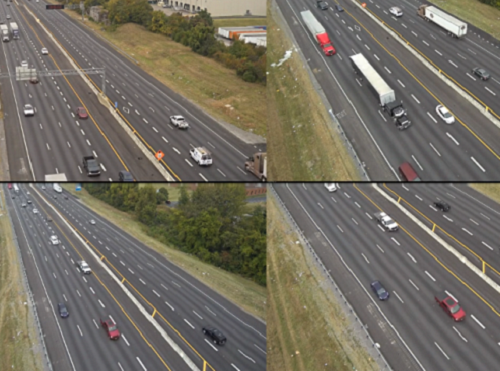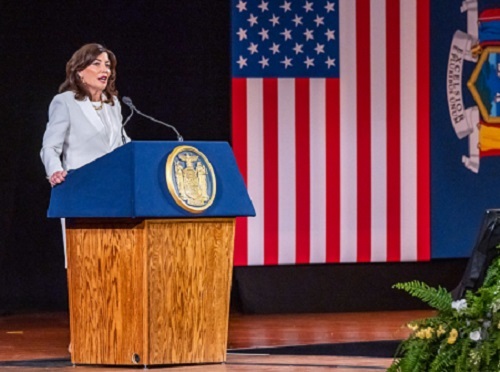FEDERAL ACTION
U.S. DOT RD&T Strategic Plan (FY 2022-2026) – Building a Better Transportation Future for All – USDOT
Inflation could sap infrastructure act’s buying power this year – Construction Dive
A new EPA proposal is reigniting a debate about what counts as ‘renewable’ – Grist
2023 Transportation Trends That Could Impact The Future Of Transportation – Forbes (contributed content)
EPA Proposes to Strengthen Air Quality Standards to Protect the Public from Harmful Effects of Soot – EPA (media release)
President Biden, Vice President Harris, Senior Administration Officials Kick Off 2023 Implementing Bipartisan Infrastructure Law – White House (media release)
COVID-19
As pandemic wanes, subway cars remain half-empty – The Hill
INFRASTRUCTURE RESILIENCE AND SUSTAINABILITY
NYC launches $2 million study to ‘reimagine’ the Cross-Bronx Expressway – Gothamist
The Great Lakes Authority chipping away at the rust – Seatrade Maritime News
Updating local regulations may ease EV charging rollout – Smart Cities Dive
Challenges loom for gondola to Dodger Stadium planned for the 2028 Olympics – Los Angeles Times
AIR QUALITY
Massachusetts Governor issues her 1st executive order, creating climate chief – MassLive
DOE Boosts Hydrogen Efforts With $750 Million in Funding – Transport Topics
ENVIRONMENTAL JUSTICE
Tampa Mapping Effort Expands City Access for Visually Impaired – Government Technology
Funding for Central Mass. transit focuses on senior/disabled ridership – Telegram & Gazette
More than 100 businesses, residences at risk of displacement under TxDOT I-35 proposal – KXAN-TV
New SEPTA chief equity and inclusion officer wants to help the homeless – PhillyVoice
Governor Unveils Transportation Plan for Rural and Urban Tennessee – Tennessee Governor’s Office (media release)
NATURAL RESOURCES
Rollback of Trump-era water rules unlikely to alter Michigan regulations – mlive.com
CULTURAL RESOURCES
How Dual-Language Highway Signs In Wisconsin Will Revive Native Languages ‘In Crisis Mode’ – Wisconsin Public Radio
Vermont towns prepare for tourists as crews work to finish final stretch of Lamoille Valley Rail Trail – WCAX-TV
Expensive, Treacherous, Beautiful: The Battle Over Dirt Roads – New York Times
HEALTH AND HUMAN ENVIRONMENT/ACTIVE TRANSPORTATION
New York Governor Signs ‘Complete Streets’ Package – AASHTO Journal
Oklahoma DOT announces development of first Active Transportation Plan – KXII-TV
Oregon DOT unveils new Innovative Mobility Program – KLCC Radio
New Massachusetts law adds protections for pedestrians and bicyclists – WBUR Radio
Stamford, Connecticut Moves Ahead With ‘Tactical Urbanism’ Solutions for Pedestrian Deaths – Connecticut Examiner
Atlanta eyes subsidizing e-bikes as popularity surges – Atlanta Journal-Constitution
New pedestrian and bike paths set to revitalize Downtown Rockford, Illinois – WREX-TV
FEDERAL REGISTER NOTICES
National Environmental Policy Act Guidance on Consideration of Greenhouse Gas Emissions and Climate Change – Council on Environmental Quality (Notice of interim guidance; request for comments)
Fiscal Year 2023 Competitive Funding Opportunity: Areas of Persistent Poverty Program – FTA (Notice of Funding Opportunity)
Port Access Route Study: Approaches to Maine, New Hampshire, and Massachusetts – Coast Guard (Notice of availability of draft report; request for comments)
National Boating Safety Advisory Committee; January 2023 Virtual Meeting – Coast Guard (Notice)
Great Lakes Pilotage Advisory Committee Meeting; February 2023 Meeting – Coast Guard (Notice)
Finding of Failure To Attain and Reclassification of Las Vegas Area as Moderate for the 2015 Ozone National Ambient Air Quality Standard – EPA (Final rule)


